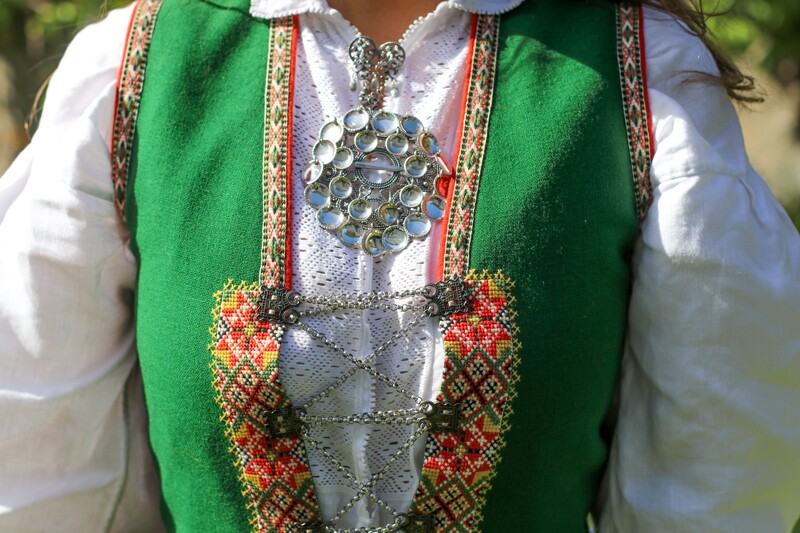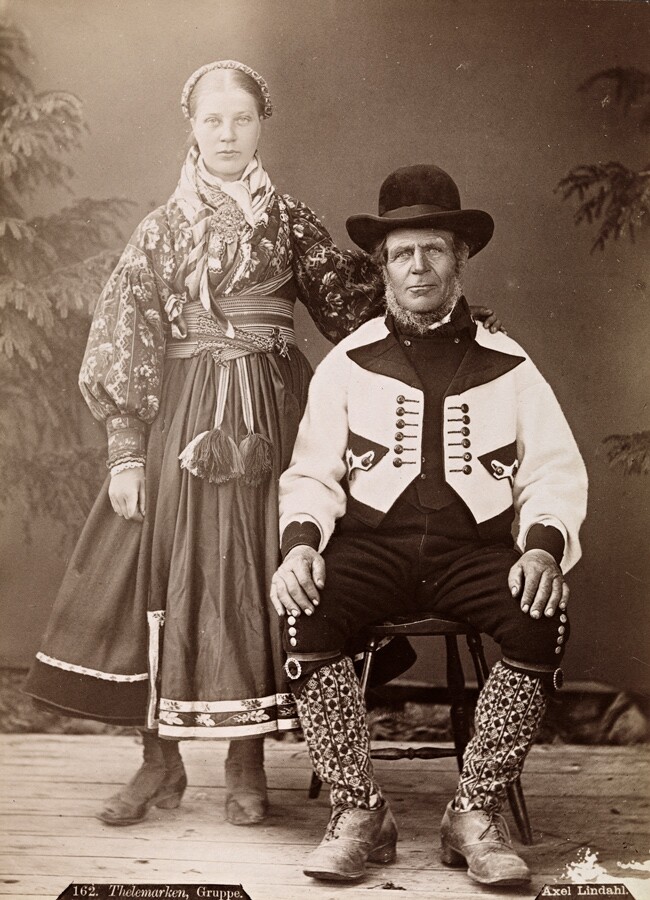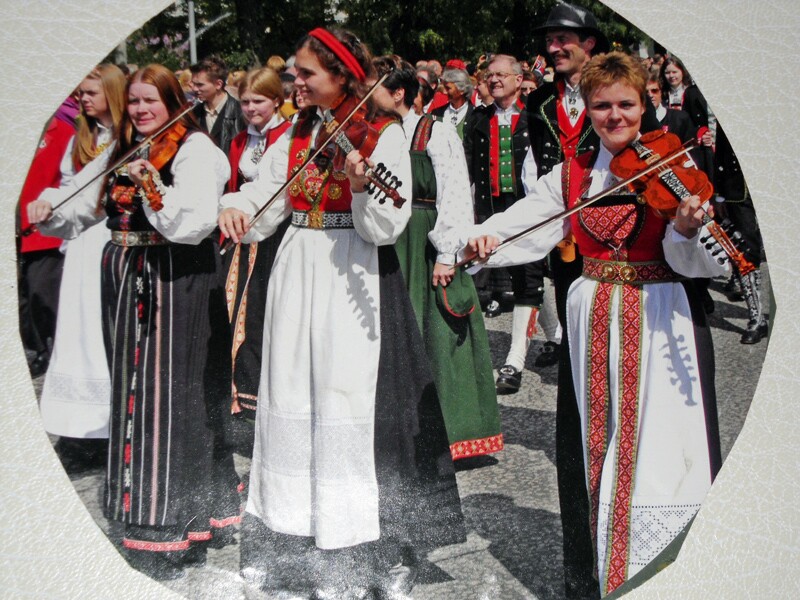Bunad is the beloved traditional Norwegian dress that many Norwegians own and wear for special occasions. Each bunad colorfully and uniquely tells the story of Norway’s history and plays a special role in tying Norwegians to their heritage.
What Is a Bunad?
The term bunad is best understood as referring to Norwegian traditional clothing, and it includes a variety of regional styles. In general, bunads are colorful garments made of wool and adorned with embroidery, buckles, shawls, scarfs, and traditional, handmade Norwegian jewelry known as solje.

Despite these unifying elements, there isn’t one official style of bunad—and that’s on purpose. Bunads are meant to uniquely represent the regions they come from. Although bunads may look similar across various regions, each bunad is meant to incorporate the unique traditions and designs of the community it represents.
For example, when tasked with creating a bunad for Østfold, one designer incorporated the rosmaling designs he saw on the cupboard of a local farm in the region. Other bunad designs may be based off surviving jewelry, embroidery, or clothing of a region’s history. You can view a gallery of the various bunad styles below.
The Unique History of Traditional Norwegian Dress
Although aspects of the bunad take after Norway’s preindustrial rural clothing, bunads are a relatively modern phenomenon. Its recent origin doesn’t make the bunad any less symbolic of Norwegian heritage and tradition, however. In fact, the modern bunad has played a significant role in reclaiming Norwegian tradition and values.

Recovering Norwegian Heritage
For centuries, Norway was under Danish rule. Leading up to and after Norway obtained independence on 7 June 1905, the Norwegian people sought to revive the unique identity and heritage of Norway. This effort led to developing a new written Norwegian language, publishing Norwegian folktales, and—you guessed it—recovering Norwegian traditional clothing.
Developing Regional Bunads
Originally, the 18th- and 19th-century focus on traditional Norwegian clothing was to create a single national costume. However, around the early 1900s, author and national activist Hulda Garborg popularized the idea of developing several regional bunads. This movement led to the diversity of bunad designs that we see today, each representing the traditions and customs of the community where it originated.
The historicity of the bunad varies between regions. Some styles date back to the Middle Ages (Setesdal’s bunad is a good example), and other bunads take more creative license, with designs only loosely based on local traditional styles. Whether a bunad’s design dates to the 14th century or the 20th century, Norwegians still take great pride in the unique designs and heritage of their region.
Modern Bunad Traditions
The tradition of the bunad is alive and well in Norway. Norwegian traditional clothing is most on display on 17 May, the day Norway celebrates its constitution, a forerunner to the country's independence, but it is also worn during special occasions such as weddings and holidays.

Many Norwegians receive their first bunad—often a family heirloom—as teenagers. A quality new bunad can cost between $2,000 and $10,000, which is one reason the outfit is designed to be altered easily for lifetime use. Although women are more likely to wear the traditional outfit, recent years have seen a resurgence in men wearing bunads.
Norwegians are quite passionate about their national clothing, and with that passion comes lively debate about bunad traditions. However, the most widely agreed upon rule is that the bunad people wear should represent a region that is significant to them. Most often, this unwritten rule means wearing the bunad of the region you or your ancestors came from.
Do you have Norwegian heritage? Do you own a bunad or have photos of family wearing a bunad? Preserve your Norwegian heritage by uploading these images to FamilySearch Memories!













